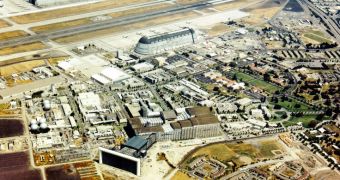The NASA Ames Research Center (ARC), in Moffett Field, California, had a full year in 2010. The organization marked a number of firsts in its history, and managed to push the boundaries of science further than in 2009.
One of the most notable events is the fact that the Kepler space telescope has begun producing its first results, detecting Earth-like exoplanets around distant stars.
This is the first space instrument constructed specifically for finding Earth-analog exoplanets in the Universe, and officials at NASA have great hopes that it will come through with tangible results.
The Kepler mission Science Operations Center (SOC) software system received the 2010 NASA Software of the Year Award as recognition for its amazing performances thus far. The telescope sent back data on more than 156,000 stars thus far.
Another important milestone ARC reached in 2010 was commissioning the airborne Stratospheric Observatory for Infrared Astronomy (SOFIA), which was constructed by NASA in collaboration with German colleagues from the DLR.
The telescope managed to see “first light” just a few months ago, and has passed all tests it was subjected to up to this point with flying colors. NASA expects to operate the machine for about 20 years or so, SpaceRef reports.
SOFIA is installed inside a heavily-modified Boeing 747SP jetliner, and its main instrument is an 100-inch diameter reflecting telescope. The airplane can fly at high altitudes, above cloud banks, and features complex stabilizing systems for the observatory.
This year also marked a first for Ames, when experts at the organization and colleagues from the Japan Aerospace Exploration Agency (JAXA) flew a DC-8 airplane alongside the fire trail left behind by the Hayabusa space probe.
The sample-return spacecraft came back home this June, after seven years spent in space, and an Ames crew had front row seats to witness the show.
A more “mundane” achievement, but one that is very important for ARC, is the completion of Sustainability Base, the first new building at Ames in more than 30 years.
Throughout 2011, the Center will most likely focus its attention on conducting thorough science with Kepler and SOFIA, which holds tremendous promise in their respective fields.

 14 DAY TRIAL //
14 DAY TRIAL //